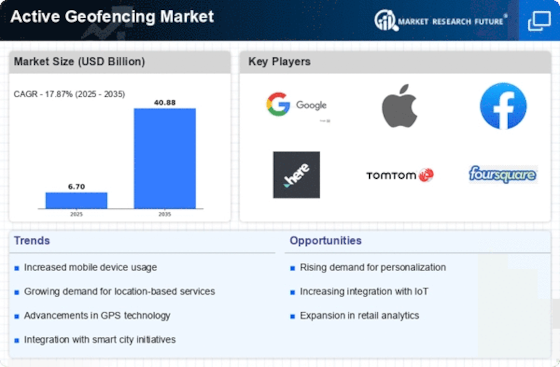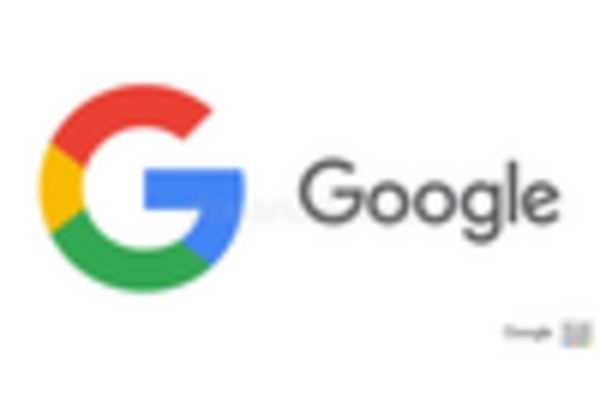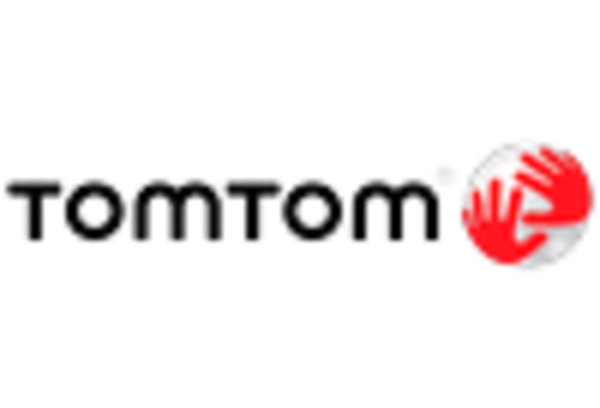Enhanced Marketing Strategies
The Active Geofencing Market is being propelled by the evolution of marketing strategies that prioritize personalization and customer engagement. Businesses are increasingly utilizing geofencing to create tailored marketing campaigns that resonate with consumers on a personal level. By leveraging geofencing technology, companies can deliver targeted advertisements and promotions to users based on their real-time locations. This approach not only increases the likelihood of customer conversion but also fosters brand loyalty. As organizations continue to refine their marketing tactics, the Active Geofencing Market is likely to see sustained growth driven by these innovative strategies.
Rise in Location-Based Services
The growing demand for location-based services is a key driver of the Active Geofencing Market. Businesses across various sectors, including retail, transportation, and hospitality, are increasingly adopting geofencing to enhance customer experiences. According to recent data, the location-based services market is projected to reach USD 100 billion by 2026, indicating a robust growth trajectory. This expansion is largely attributed to the increasing reliance on GPS technology and the need for personalized marketing. As companies seek to optimize their operations and improve customer interactions, the Active Geofencing Market stands to benefit significantly from this trend.
Integration of Smart Technologies
The integration of smart technologies, such as the Internet of Things (IoT), is significantly influencing the Active Geofencing Market. As smart devices become more prevalent, the ability to connect and communicate with geofencing applications enhances the overall user experience. For instance, smart home devices can trigger specific actions based on a user's location, creating seamless interactions. This trend is expected to drive the Active Geofencing Market forward, as businesses seek to capitalize on the capabilities of smart technologies to improve operational efficiency and customer satisfaction. The synergy between geofencing and IoT is likely to unlock new opportunities for innovation.
Increased Adoption of Mobile Devices
The proliferation of mobile devices has catalyzed the growth of the Active Geofencing Market. As smartphones and tablets become ubiquitous, businesses are increasingly leveraging geofencing technology to engage customers in real-time. This trend is evidenced by the fact that over 80% of the population now owns a smartphone, providing a vast user base for geofencing applications. Companies utilize geofencing to send targeted promotions and notifications based on users' locations, enhancing customer engagement and driving sales. The Active Geofencing Market is thus experiencing a surge in demand as businesses recognize the potential of mobile devices to facilitate location-based marketing strategies.
Growing Emphasis on Customer Experience
The increasing emphasis on customer experience is a pivotal driver for the Active Geofencing Market. Companies are recognizing that enhancing customer interactions is essential for retaining clientele and fostering brand loyalty. Geofencing technology allows businesses to engage customers at critical touchpoints, providing timely and relevant information based on their locations. This focus on customer-centric strategies is reflected in the fact that organizations investing in customer experience initiatives are likely to see a 10-15% increase in revenue. As the Active Geofencing Market continues to evolve, the prioritization of customer experience will remain a fundamental driver of growth.


















Leave a Comment